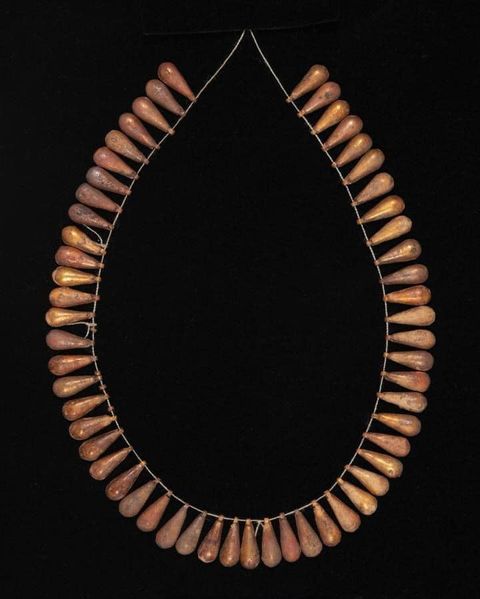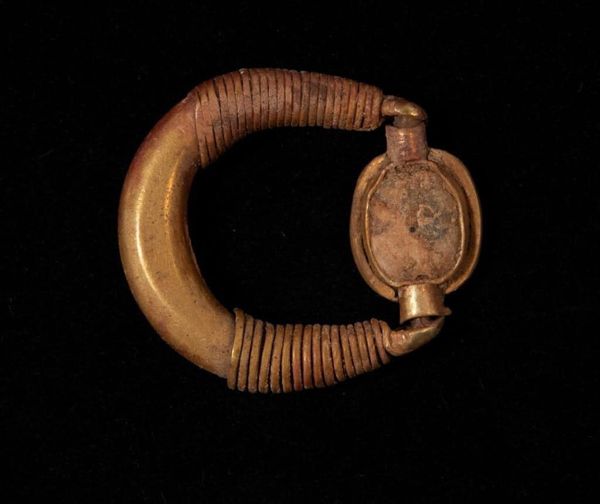CAIRO – 13 December 2022: The Egyptian-English archaeological mission affiliated with the University of Cambridge and operating in the Tel el-Amarna Antiquities Area in El-Minya uncovered a burial containing a group of gold ornaments, during excavations in the Northern General Cemetery, according to Secretary General of the Supreme Council of Antiquities Mostafa Waziri.
Waziri also noted that the mission has been working in the Northern General Cemetery since 2010 in an attempt to study the quality of food and common diseases, as well as the social and economic situation of the residents of the city of Akhetaton (Tel el-Amarna), the capital of Egypt during the era of King Akhenaten.
For his part, Director General of Antiquities of Central Egypt Gamal el-Samastawy said that the gold ornaments consist of a ring decorated with a picture of the ancient Egyptian deity of fun Bes, another ring decorated with hieroglyphs, and a small necklace of hollow gold beads.



Deputy Head of the English mission Anna Stephen added that the mission has been working in the Tel el-Amarna Antiquities Area since the 80s and has uncovered many antiquities, in addition to the restoration work of mud-brick buildings, the remains of houses and palaces, and of the small and large Aten temple.
It is worth noting that Tel El-Amarna is considered one of the most important archaeological areas in Egypt, as it was the country's capital during the era of King Akhenaten, who called for monotheism and the worship of one god, which he called Aten.
Akhenaten named the city Akhetaton which means the horizon of Aten. In the city, he established many religious buildings for the worship of Aten, such as the Great Temple and the Small Temple, in addition to royal palaces such as the Grand Palace and the King’s House, linked by a bridge crossing the royal road used by Akhenaten to pass from his residence to the seat of government.
Akhenaten also built the Northern Palace, known as Nefertiti Palace, as well as many large houses belonging to courtiers and senior statesmen.
The area also houses 25 tombs carved in the eastern mountain for senior statesmen and priests. These are large tombs engraved with religious themes representing the art of Amarna. This is in addition to the royal cemetery, which is similar in its layout to the tombs of the New Kingdom in the Valley of the Kings, and is located inside the mountain, 15 km to the east of the ancient city.
Comments
Leave a Comment